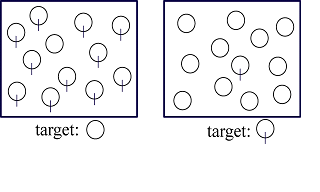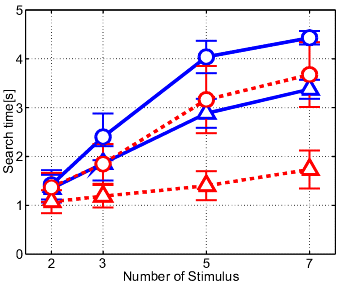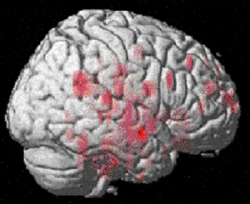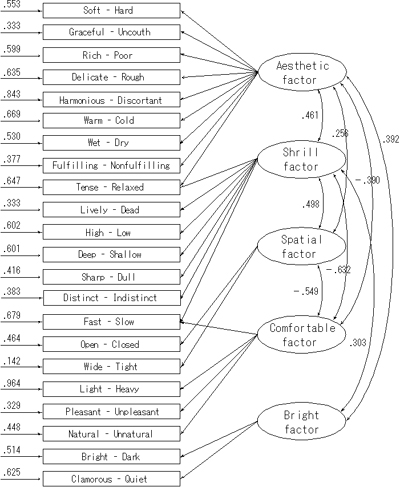|
Auditory search asymmetry
We can easily perceive a specific sound even in a noisy place without paying attention.
The aim of this study is to clarify the most effective auditory mechanisms of sound selection
used to obtain omnidirectional spatial information.
Search asymmetry was adopted to clarify the features which cause auditory sound selection.
It is clear that temporally fluctuating sounds and native-like speech sounds
are found and recognized easily and quickly. Moreover, the examinations with
the neural imaging methods have been conducted to clarify the difference of
detection mechanisms between conspicuous sounds and inconspicuous ones.

|
|---|
|
An example of visual search asymmetry
iSearch asymmetry between gcircleh and htreeh found by Treisman et al., 1985j
|
|---|
|
It is easy to find a tree in the right panel while it is difficult to find a circle in the left panel.
To this regard, the difficulty of searching varies dramatically depending on which stimulus is chosen as the target.
|

|
|---|
|
The search times for native speech sounds
and those for non-native speech sounds are plotted with the number of stimuli.
|

|
|---|
What is the origin of the cocktail-party effect?
This figure shows differences of neural responses in a search task of sounds with two different characteristics.
|
Psychological impression
We perceive sound not physically but psycho-acoustically. Hence, if the
relationship between the physical factors and the psychoacoustical factors of sound are clarified
it might be possible to control the sound quality simply by moving sliders,
each of which corresponds
to a single psychoacoustical factor such as spaciousness or comfortableness.
Cross correlation between left and right channels of stereo sound signal is focused
on as a physical factor that strongly influences the spaciousness. Factor analysis
applying to the listening test in which the power spectrum of both channels were
varied to change the cross correlation
told that the spaciousness was obtained independently by this manipulation.

|
|---|
|
Example of listener's response. Listeners evaluate test
stimuli with respect to many adjective pairs. |

|
|---|
|
Psychoacoustical perceptual model obtained from the
listening test in which the cross correlation between
left and right channels was varied.
|
|